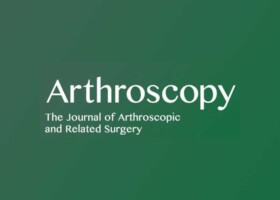
Authors:
Peter J Millett, Marilee P Horan, Andrew T Pennock, Daniel Rios
Abstract:
Purpose:
The purpose of this study was to examine the surgical outcomes of 29 active patients (30 shoulders) with end-stage, symptomatic glenohumeral arthritis undergoing the comprehensive arthroscopic management (CAM) procedure.
Methods:
In this institutional review board-approved study, patients with advanced glenohumeral osteoarthritis (OA) underwent the CAM procedure, a joint-preserving arthroscopic treatment. All subjects were candidates for shoulder arthroplasty. The CAM procedure involves the combination of glenohumeral chondroplasty; removal of loose bodies if present; humeral osteoplasty and osteophyte resection (goat's beard deformity); anterior, posterior, and inferior capsular release; subacromial decompression; axillary nerve neurolysis; and biceps tenodesis. Outcome measures included pain, American Shoulder and Elbow Surgeons score, Single Assessment Numeric Evaluation score, QuickDASH (short version of Disabilities of the Arm, Shoulder and Hand questionnaire) score, and satisfaction. For survivorship analysis, failure was defined as progression to shoulder arthroplasty.
Results:
The mean age was 52 years (range, 33 to 68 years), and there were 23 men and 6 women. Of the 30 shoulders, 6 progressed to an arthroplasty at a mean of 1.9 years (range, 0.9 to 3.4 years). Patients with less than 2.0 mm of joint space on radiographs were more likely to undergo arthroplasty (P = .037). For shoulders that did not progress to arthroplasty (n = 24), the mean follow-up was 2.6 years (range, 2.1 to 4.7 years). The American Shoulder and Elbow Surgeons scores significantly improved from 58 points (SE, 2.4) to 83 points (SE, 3.3) (P < .001), and pain levels decreased with activities of daily living, work, recreation, and sleep (P < .05). The median patient satisfaction rating was 9 (range, 3 to 10). Survivorship analysis showed a 92% survival rate at 1 year and 85% at 2 years. Patients with larger osteophytes had greater improvement in postoperative range of motion but were less satisfied (r = 0.479, P = .038).
Conclusions:
The CAM procedure reduced pain, improved function, and provided reasonable short-term durability for our cohort of young, active patients with advanced shoulder OA and may serve as a joint-preserving alternative to arthroplasty. Patients with less than 2 mm of joint space had a significantly higher failure rate. The CAM procedure is a viable surgical option in young, active patients with advanced OA, showing survivorship of 85% at 2 years.
For the complete study: The Comprehensive Arthroscopic Management Procedure for Treatment of Glenohumeral Osteoarthritis
